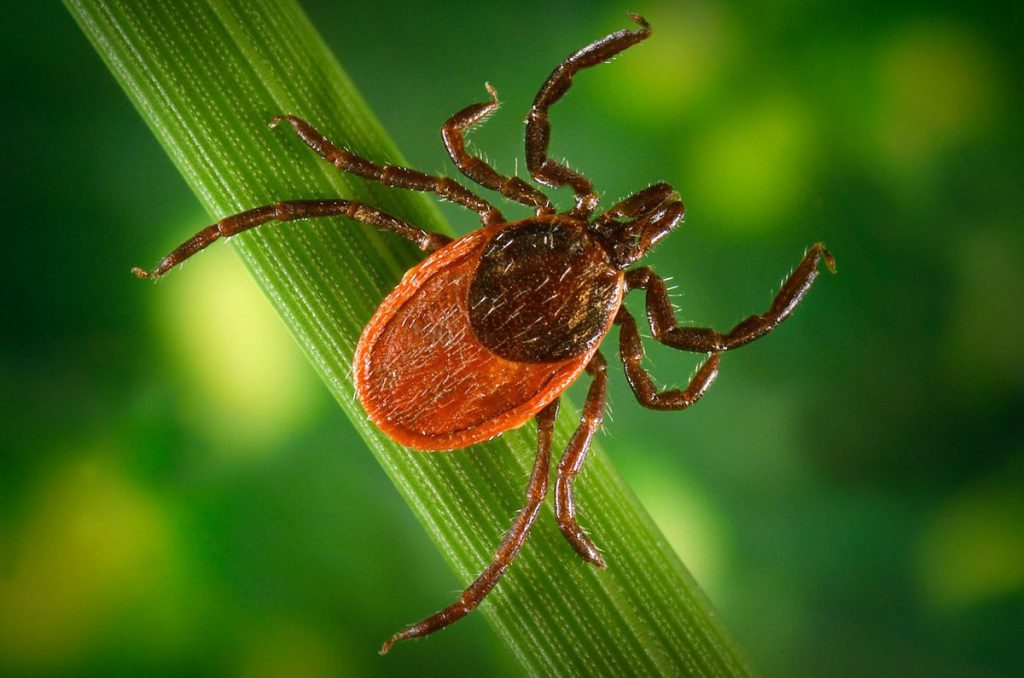
If you spend a any time out-of-doors in Wisconsin’s wonderful natural areas, you are going to be exposed to ticks and with that, the risk of Lyme Disease. Here is what you should know from the Wisconsin Department of Health:
What is Lyme disease?
Lyme disease is an illness caused by a bacterium, Borrelia burgdorferi, transmitted to humans by a tiny tick named Ixodes scapularis(commonly called the black legged or deer tick). Lyme disease may cause signs and symptoms affecting the skin, nervous system, heart, and/or joints of an infected person. More than 20,000 cases of the disease have been reported in Wisconsin residents since surveillance for Lyme disease began in 1980.
Why is it called Lyme disease?
The first cluster of human illnesses associated with this bacterium was described near the town of Lyme, Connecticut during the mid 1970′s.
Who gets Lyme disease?
Males and females of all ages can get Lyme disease but children less than 16 years old and adults more than 40 years old appear to be at higher risk. People who spend time outdoors in tick-infested environments are at increased risk of exposure and exposure can occur whenever the temperature at ground level is warm enough for ticks to be active. In Wisconsin, most cases have occurred among persons living in the western half of the state.

How is Lyme disease spread?
In Wisconsin, the disease is acquired by a tick bite from an infected deer tick. The bite of a tick is usually painless. Only nymph and female adult deer ticks transmit Lyme disease to humans and the tick must be attached for at least 24 hours to transmit the disease.
What are the symptoms of Lyme disease?
Most Lyme disease case patients report their symptoms beginning during the late spring and summer months (May through August). The illness often, but not always, starts as a roughly circular reddish rash (called erythema migrans) around or near the site of the tick bite. The rash expands in size over a period of days or weeks. During the rash stage, other symptoms such as fever, headache, fatigue, stiff neck, muscle and/or joint pain may be present. These signs and symptoms may last for several weeks. If left untreated, complications such as meningitis, facial palsy, heart abnormalities, and arthritis may occur within a few weeks to months after the initial onset of symptoms.
How soon do symptoms occur?
Early symptoms usually begin within a month of exposure. Arthritic, cardiac, and neurologist complications may take weeks or months to appear in untreated persons.
Does past infection with Lyme disease make a person immune?
Although past infection provides some immunity, this immunity is relatively short-lived. Therefore it is possible for a person to get infected more than once.
What is the treatment for Lyme disease?
The disease is treated with oral or injectable antibiotics. Lyme disease is more easily treated when detected early. Exposed persons should monitor their health and promptly see a health care provider if signs and symptoms consistent with Lyme disease (such as erythema migrans rash) develop. Remember, an infected tick must be attached for more than 24 hours to successfully transmit B. burgdorferi to humans.
Is there a vaccine to prevent infection?
No. Although there had been a vaccine against human Lyme disease, this vaccine is no longer marketed.
What can be done to prevent the spread of Lyme disease?
If you are in areas where ticks may be present, the following precautions may reduce the risk of acquiring Lyme disease:
- Insect repellents containing 0.5% permethrin or 20-30% DEET have been shown to be effective in repelling deer ticks. Be sure to follow the manufacturer’s directions on the label.
- Wear a long-sleeved shirt, long pants, and high socks with pant cuffs tucked into the socks. Light colored clothing will make ticks easier to find.
- Walk in the center of mowed trails to avoid brushing up against vegetation.
- Conduct thorough “tick checks” on yourself and your children after spending time in tick-infected areas. Prompt removal of ticks, even after they have attached, can drastically reduce the chance of Lyme disease transmission.
How should a tick be removed?
To remove an attached tick, grasp it with narrow-bladed tweezers or forceps as close as possible to attachment (skin) site, and pull upward and out with a firm and steady tension. If tweezers are not available, use fingers shielded with tissue paper or rubber gloves. Do not handle with bare hands. Be careful not to squeeze, crush or puncture the body of the tick which may contain infectious fluids. After removing the tick, thoroughly disinfect the bite site and wash hands. See or call a doctor if there is a concern about incomplete tick removal. It is important that a tick be properly removed as soon as it is discovered.
